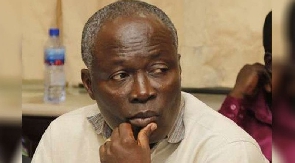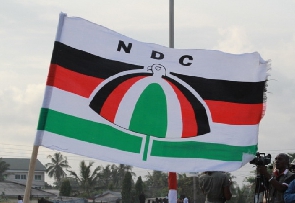Accra, Sept. 21, GNA - The Presidential Commission on Pensions has recommended a three-tier pension structure, comprising two mandatory schemes and one voluntary scheme to ensure retirement income security for workers.
In a 161-page interim report presented to President John Agyekum Kufuor last June and outdoored in Accra on Wednesday, the Commission said if the principle of the new proposals was accepted, benefits for current beneficiaries would significantly improve to meet their aspirations for a better lump-sum payment.
It has also recommended the establishment of an independent pensions commission to regulate both public and private pension schemes. The first tier is a structured Social Security and National Insurance Trust (SSNIT) Scheme to be retained as a mandatory state social security pension scheme, which would pay only periodic monthly and other pension benefits, with the exception of the 25 per cent gratuity lump sum.
"It will be a defined benefit scheme, benefiting from a portion of contributions from both the workers' five per cent and the employers' 12.5 per cent.
Under this new scheme, SSNIT will not pay the 25 per cent lump sum. The second tier is a mandatory, privately managed Occupational Pension Scheme, which will be a defined contribution scheme paying mainly lump-sum benefits.
The Commission recommended that the minimum total contribution should be legislated, but must not fall below five per cent. "Out of the minimum five per cent to be legislated, four per cent will be hived off SSNIT, while the remaining one per cent will be contributed by the employer and the employee."
The Commission recommended that the employer and employee could negotiate a higher contribution beyond the minimum five per cent. The third tier would be voluntary, privately managed personal pension scheme offering attractive tax incentives.
The Commission said a suggestion that government should support these schemes with tax incentives and a regulatory framework to enable them to fulfil the roles expected of them effectively had been captured by the Long-Term-Savings Act, "Act 679 of 2004".
"The new proposal will significantly improve pension benefits," it said.
"It is the Commission's view that the utilisation of a portion of a member's previous contributions to SSNIT, described as Past Credits, will serve as significant improvement to the lump sum to be paid under the proposed second tier scheme, making it comparable to, or even better than the lump sum CAP 30 offers.
"This cushioning arrangement will make it easier for workers who are less than 50 years old, to join the new scheme at its inception, even at the five per cent contribution rate."
The nine-member Commission; chaired by Mr Thomas Ango Bediako, Former General Secretary of the Ghana National Association of Teachers; presented its interim report to the President in June.
The interim report looked at several issues including types of pension scheme structures and criteria for public sector pensions framework, existing public sector pension schemes, financing, management and administration of public sector schemes, occupational pension schemes in the private sector and pension arrangements in selected countries.
Ghana currently operates two separate public-sector pension schemes, the SSNIT and CAP 30.
The Commission said its preliminary calculations indicated that at age 50 years and above and with five per cent contribution, the number of years left for active service may not allow enough fund to be accumulated under the second tier scheme to match the lump sum expected under CAP 30.
In this special case, the Commission suggested that SSNIT could pay a lump sum higher than the 25 per cent used at present to about 35 per cent.
"SSNIT would thereafter review the formula for calculating regular monthly pensions to those workers falling under the Special Case at inception, so that they match the expected current values of monthly pensions.
"It must be noted that additional funding will be necessary and government must consider paying subsidies to improve the benefits of workers, who will be 50 years and above from the inception of the scheme.
"To maximise the quantum of the lump sum benefits and match the CAP 30 lump sum, contribution rate for workers above 50 years, should be at least eight per cent instead of the legislated five per cent."
Click to view details



General News of Wednesday, 21 September 2005
Source: GNA
















